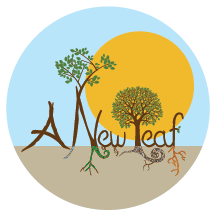Emergent Curriculum requires a certain level of attentiveness. As educators and students actively craft the learning environment around them, it is up to the teachers to monitor internal and external influences and the effects they have on the educational atmosphere.
The Reggio Emilia philosophy espouses a curriculum guided by the interests of the student body, which means the use of materials and objects in the learning environment is highly dependent on how students view the materials available to them. Sometimes, this can be as literal as placing the materials in a location the students can easily see and access without assistance. Other times, it can mean asking guiding questions to help the students view materials or environments from a new perspective.
Frog statues in the garden aren't just cosmetic. They are light enough that almost any student can pick them up and move them. Being encouraged to decorate the garden before or after tending to the plants can engender a feeling of attachment to the garden and the plants therein.
Materials can be rotated and exchanged easily enough, and being mindful of when it is appropriate to change these materials can often mean the difference between curriculum that is persisting for the sake of itself and a truly interest guided curriculum. However, materials are not the only aspect of a learning environment that can be adjusted to help students learn.
The environment itself can be changed, shaped, and adjusted to better suit the interests of students as well. While not always as easy as rotating materials, the results can be far more drastic. The introduction of new shelving or storage units, adjusting the location of furniture, incorporating new colors into a decorating scheme, or adding additional student seating are just a few examples that can make a significant difference in a learning environment.
Box chairs are lightweight enough to carry, sturdy enough to be sat upon, and stylish enough to make students want to use them. When they aren't sitting, students can move them about as they see fit. Rocket ships, caves, treasure chests, cars, and trains all become possible with them simple addition of freely movable chairs.
Additionally, changing the environment itself provides educators with an unprecedented opportunity. By inviting students to participate in the reshaping of their learning environment, they can share in the ownership. Shelving constructed with the assistance of students encourages not only small motor tool dexterity, but planning constructive uses for the materials placed on the shelves. While looking at the instructions diagrams, students learn to follow instructions, the importance of sequencing, and practice translating two-dimensional images into a three-dimensional final product.
Be mindful of storage units in the classroom. If the goal is to have students use certain materials, those materials need to be available to students of all sizes and ages. They cannot retrieve and engage with objects they cannot see or reach.
Constructivist educators striving to provide an engaging and immersive atmosphere for organic learning find a balance between routine and novelty. The classroom isn't a monolith to withstand the test of time. A learning environment is something to be nurtured and crafted over time. Children are impressively dynamic, and the space they learn in should reflect their reality. In this way, materials and all learners coexist in a space conducive to development and growth.



